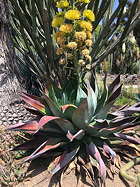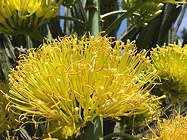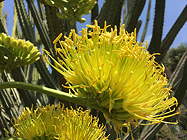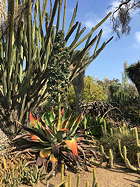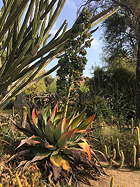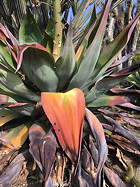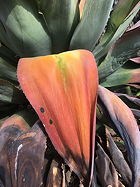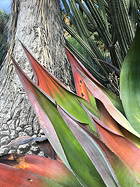Like many agaves, this Costa Rican species is variable with leaves ovate to lanceolate, ascending to out-curved, green to glaucous. Ours has robust, more or less ovate leaves of glaucous gray in a rosette to about 2 m in diameter. Since 2010, it has grown in the lower Desert Garden, experiencing light frosts of short duration most winters. In 2017 it flowered. In contrast to the 8 m inflorescence noted in Weber’s original description, ours produced a densely flowered, short inflorescence barely 3 m tall. This panicle was also striking for its bright yellow flowers. The rosette was equally attractive as it put its energy toward flowering, the leaves developing longitudinal ridges as they slowly desiccated and blushed reddish in color. After flowering, the inflorescence was left to form the numerous bulbils that now make this offering possible. We offer bulbils of HBG 104150, a plant from John Linesch, a Culver City, CA based landscaper, who obtained it from an earlier flowering, bulbils of which were offered as ISI 1447 in 1984. This, then, is the same clone as HBG 19138, originally collected May 7, 1965 by H. S. Gentry (#20668) at 4000’ along the Río Segundo, northwest of San Jose, Costa Rica. “Werckle reported it as native to the region of the Río Grande on the Pacific slope of Costa Rica, where it grew in hot country in sparse grassland, also home of the tropical giant Ceiba trees and vanilla orchids.” Originally received by the Huntington in 1966 as Agave sp., Gentry subsequently identified it as A. wercklei in 1969. Rooted bulbils, $8.
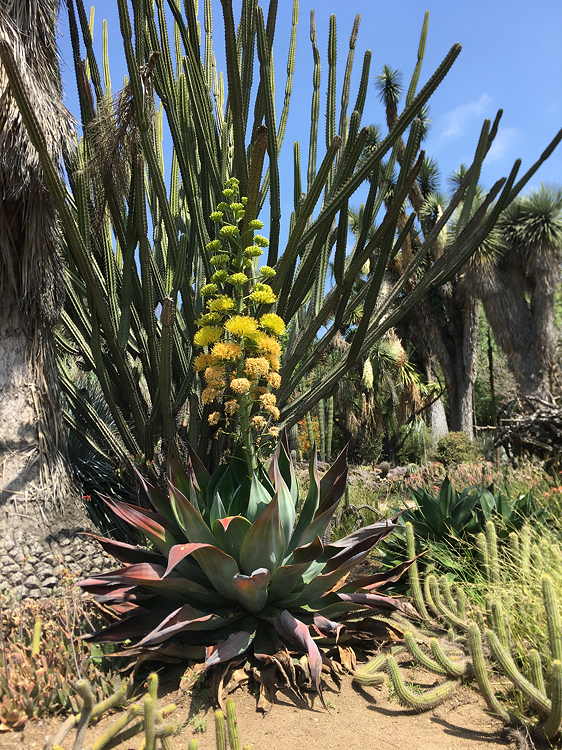
Published in the Cactus and Succulent Journal, Vol. 90 (2), Summer 2018

